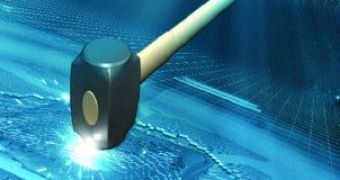The tri-core processor line from AMD promises a little to everyone. There are processors to suit everybody's needs for computing, but rumor has it that most of them are more or less unlikely to become real. We have got used to AMD announcing release dates and then postponing them until Kingdom Come, so what you are going to read next is subject to delay, until proven otherwise.
Toliman is the first triple-core processor announced by AMD and is similar to the quad-core Agena processor, except that a core has been disabled. The CPU is scheduled for launch in February next year, but mass production will start in late March. Sources alleged that Tolimans would feature Agena's 2MB of shared L3 cache and will be launched with a 95W thermal density power.
AMD's roadmap says that the company will switch from 65 to 45-nanometer production in the quad-core sector in late 2008, but quad-core offerings with 45nm dual-core and triple-core processors are not to be seen until at least 2009. Heka would herald the 45nm tri-core processor line and is supposed to support both DDR2 and DDR3. There will be two Heka flavors: a version is to incorporate a shared L3 cache, while the other won't. The quad-core series, except for the Propus family, will still feature a shared L3 cache. Moreover, it seems that AMD has already decided that the mainstream Phenom quad-core processors will only support DDR3 exclusively.
The chip manufacturer has also announced yet another 'disabled' processor, called Regor. This would be a dual-core version of Deneb, which means that Regor would be a core-disabled version of yet another core-disabled processor.
It would not be too odd if we asked what the purpose of releasing disabled-core processors is. As far as rumors show, Heka is a combination of Deneb and Propus quad core processors, so it is assumed that the tri-core family would be comprised of defective Deneb and Propus chips that didn't make it on the market after the 2008 launch.

 14 DAY TRIAL //
14 DAY TRIAL //